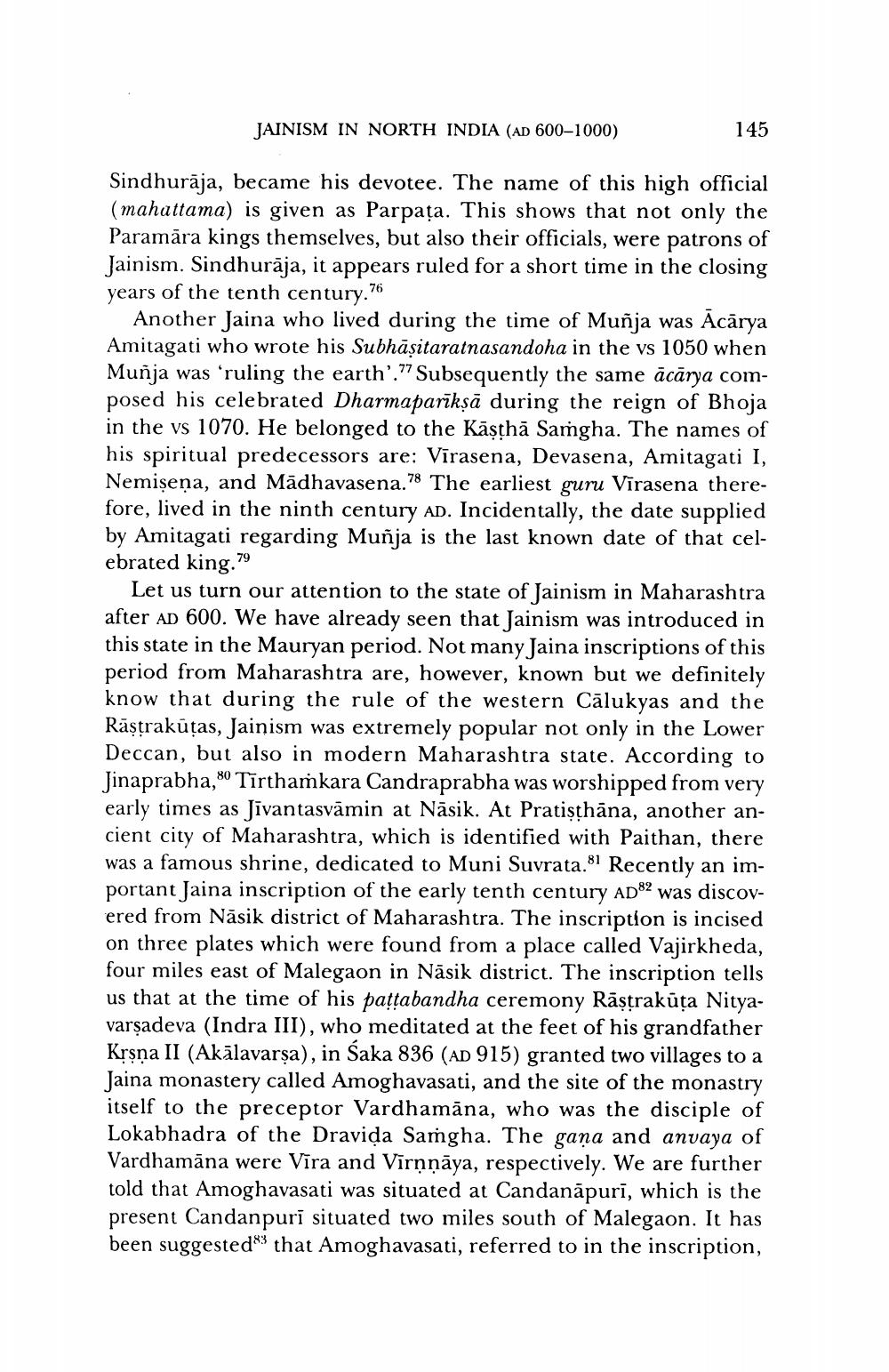________________
JAINISM IN NORTH INDIA (AD 600-1000)
145
Sindhurāja, became his devotee. The name of this high official (mahattama) is given as Parpața. This shows that not only the Paramāra kings themselves, but also their officials, were patrons of Jainism. Sindhurāja, it appears ruled for a short time in the closing years of the tenth century.76
Another Jaina who lived during the time of Muñja was Acārya Amitagati who wrote his Subhāsitaratnasandoha in the vs 1050 when Munja was 'ruling the earth':77 Subsequently the same ācārya composed his celebrated Dharmaparīksā during the reign of Bhoja in the vs 1070. He belonged to the Kasthā Samgha. The names of his spiritual predecessors are: Vīrasena, Devasena, Amitagati I, Nemişeņa, and Madhavasena.78 The earliest guru Virasena therefore, lived in the ninth century AD. Incidentally, the date supplied by Amitagati regarding Muñja is the last known date of that celebrated king.79
Let us turn our attention to the state of Jainism in Maharashtra after AD 600. We have already seen that Jainism was introduced in this state in the Mauryan period. Not many Jaina inscriptions of this period from Maharashtra are, however, known but we definitely know that during the rule of the western Cālukyas and the Rāstrakūtas, Jainism was extremely popular not only in the Lower Deccan, but also in modern Maharashtra state. According to Jinaprabha, 80 Tīrthamkara Candraprabha was worshipped from very early times as Jivantasvāmin at Nāsik. At Pratisthāna, another ancient city of Maharashtra, which is identified with Paithan, there was a famous shrine, dedicated to Muni Suvrata.81 Recently an important Jaina inscription of the early tenth century AD82 was discovered from Nāsik district of Maharashtra. The inscription is incised on three plates which were found from a place called Vajirkheda, four miles east of Malegaon in Nāsik district. The inscription tells us that at the time of his pattabandha ceremony Rāstrakūta Nityavarsadeva (Indra III), who meditated at the feet of his grandfather Krşņa II (Akālavarșa), in Saka 836 (AD 915) granted two villages to a Jaina monastery called Amoghavasati, and the site of the monastry itself to the preceptor Vardhamāna, who was the disciple of Lokabhadra of the Dravida Samgha. The gaña and anvaya of Vardhamana were Vira and Virnnāya, respectively. We are further told that Amoghavasati was situated at Candanāpuri, which is the present Candanpuri situated two miles south of Malegaon. It has been suggested that Amoghavasati, referred to in the inscription,




